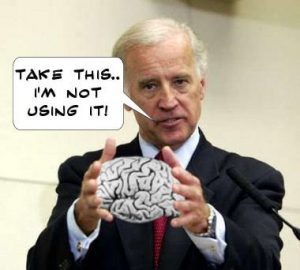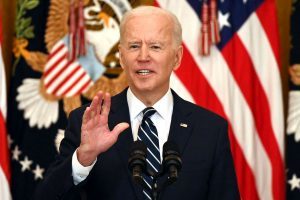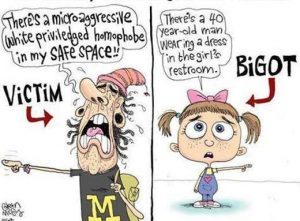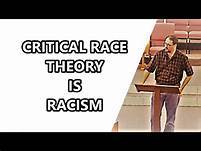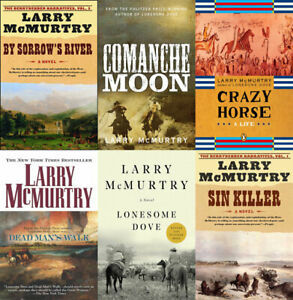Ronald E. Yates's Blog, page 55
April 30, 2021
Remembering the Final 24 Hours in the Fall of Saigon
Forty-seven years ago, I was in a place called Saigon as it fell to Communist North Vietnamese troops. It is a day I will never forget, not only because I wasn’t sure if I would get out of Vietnam in one piece, but because I still consider it one of the greatest betrayals in American history. Thousands of Vietnamese who had worked for and with the United States in an effort to keep South Vietnam from being conquered and assimilated by Communist North Vietnam were left behind as America abandoned them to concentration camps and worse.
 Covering Cambodia & Vietnam 1974-75
Covering Cambodia & Vietnam 1974-75At the time, I was the Chicago Tribune’s Far Eastern Correspondent based in Tokyo, and I had gone to South Vietnam and Cambodia to report on both countries two years after the spurious Paris Peace Accord was signed.
In my post today, I am sharing with you my account of that harrowing, panic-filled 24-hour period between April 29-30, 1975, when a ten-year-long war that some have called America’s “lost crusade” came to a frantic and ignominious end.
During that frenzied final day, 1,373 Americans, 5,680 Vietnamese and an exhausted and ailing American ambassador with the American flag folded under one arm and his pet poodle under the other would flee a land infamous for its coups d’état and its Byzantine cabals—a stunningly beautiful place of soaring green hills, lush forests, vast rubber plantations and fertile rice paddies that had become a political and military swamp for several American presidents.
Most Americans have subsequently concluded that what was then the longest war in this nation’s history was also the first war America ever lost. However, as a former North Vietnamese colonel told me several years ago, one of the great ironies of Vietnam is that the American military was never defeated in any battle of consequence.
“You lost the war in the cities and villages of America, not on the battlefields of Vietnam,” Col. Ba Thang political commissar of the Saigon Gia Dinh Special Action Unit, told me. “We could never hope for a military victory against such a formidable foe. Our strategy was to survive, to make the war last so long that you Americans would eventually tire and go home. That is what happened. We divided you politically and sapped your will to fight a war in a country few Americans had ever heard of or cared about.”
Indeed, while the specter of Vietnam still haunts us today, in the 1960s and 1970s, it divided the nation like nothing since the Civil War. In some ways, it continues to do so.
References to American involvement in Iraq and Afghanistan as America’s “new Vietnams” are consistently seen and heard in the news media. The phrase “no more Vietnams” adorns placards at nearly every demonstration against any U.S. military involvement and one even hears references to “the light at the end of the tunnel,” the phrase used in the 1960s by former Defense Secretary Robert McNamara to describe U.S. progress toward winning the war in Vietnam.
McNamara’s pet phrase was far from my mind 45 years ago when a barrage of 122 mm rockets slammed into Saigon. It was a little after 4 a.m. on April 29, 1975, when I was jolted awake in my second-floor room of Saigon’s four-story French colonial-era Continental Palace Hotel. As I sat upright in my bed, I realized it was oppressively hot and after the initial explosions, strangely quiet.
 Continental Palace Hotel (Ron Yates)
Continental Palace Hotel (Ron Yates)Then I realized why. The old window air conditioner had stopped its moaning and coughing. There was no electricity. The North Vietnamese had hit one of Saigon’s power plants—a common occurrence during the past few weeks. I lit one of the dozen or so candles I always kept ready and looked up at the ceiling.
The gecko lizards had stopped chasing after mosquitoes and were retreating down the walls. Cockroaches the size of credit cards were scampering into the cracks of the ruby floor tiles. Even the rat that regularly patrolled my room was gone (I had named him General Giap, after the architect of North Vietnam’s military campaign).
I wondered if what I had heard had been thunder. April 28th had been a day of thunderstorms with lightning flashing over the city. Then, a few moments later, the unmistakable metallic sound of a 122 mm rocket shrieked through the thick humid night air and exploded nearby. This time chunks of ancient plaster fell from the ceiling, and the walls of the 100-year-old hotel shuddered.
That was not thunder. These were the first rockets to hit Saigon since April 27 when one slammed into the roof of the Majestic Hotel overlooking the Saigon River a few blocks away, killing a hotel porter. Later that same morning, another rocket smashed into Saigon’s bustling Ben Thanh Market, killing more than a dozen people.
I jumped from the bed, scampered barefoot over the cold crimson tiles to the small balcony overlooking Lam Son Square, and threw open the French windows. Before me, looming in all its hulking alabaster majesty, was the old National Assembly Building and beyond it the high rise Caravelle Hotel. Both were intact.
To my right where Le Loi Street bisected Tu Do Street, several members of the South Vietnamese home guard, with red rosettes in their buttonholes identifying them as loyalists, were firing their old M-1 carbines. For the past several weeks, home guard troops, who were mostly teenagers, had patrolled the streets by day and at night had slept on sidewalks wrapped in ponchos.
As I looked down at the home guard, bullets buzzed through the dank night air and ricocheted off nearby buildings. I ducked as several rounds slammed into the white façade of the hotel. During the past several months, I had gotten to know several of these home guard militia. Their job was to enforce Saigon’s nighttime curfew. I paid them to escort me after curfew to the Public Telephone and Telegraph Office so I could telex my stories back to the Chicago Tribune.
“What are you shooting at?” I yelled.
“V.C., beaucoup V.C.,” a 17-year-old named Nha shouted back.
“Where?”
“They everywhere…you better hide.” Then Nha, who was usually wasted on Vietnamese “33” beer by this time, shrieked with laughter. “Không Quan trọng!” (It doesn’t matter). We kill all number ten V.C.”
Yeah, I remember thinking if you don’t kill everybody else in the city first. Nha lifted his rifle and fired several more rounds into the air. I had seen Nha in action with his M-1 carbine during our after curfew hikes to the PTT office. He often amused himself by blasting away at the giant rats that roamed Saigon’s deserted streets after the cyclos and ancient smoke-belching Renault taxis had stopped running for the night.
I retreated into my room. In the distance, there were more heavy explosions—what sounded like 80 mm mortar rounds and 130mm heavy artillery hitting Tan Son Nhut, Saigon’s main airport some 7 miles away. The temperature was already approaching 90 degrees as I got dressed, and the sun wasn’t even up. I decided to forgo what would have been a cold shower. I needed to get downstairs to see what was going on.
Was this it? I can recall thinking. Is this the end? As it turned out, America’s disastrous crusade in Vietnam was indeed over. And this was the way it would end: not with honor, as one president had suggested, but in disgrace and humiliation and chaos.
Even though the city was now under a 24-hour curfew, for much of that final day some 20,000 terrified, shrieking Vietnamese—many of them former U.S. government employees—would surround the American Embassy, pleading with Marine guards to allow them inside the 10-foot walls so they could board the choppers that would take them to the armada of 44 American ships waiting off the Vietnamese coast.
Some would make it over the walls and onto the helicopters. But only some. Most would be held at bay by U.S. soldiers—former allies—who pointed M-16s at them, cursed them, pounded their clawing fingers with rifle butts, and threatened to blow their heads off. I can still hear the voices of American embassy officials and their Vietnamese interpreters shouting: “Không ai sẽ bị tụt hậu!” (No one will be left behind) at the frantic throng outside the Embassy compound.
It was a scene that still saddens me today—one that made me ashamed to be an American, not because we were leaving in abject defeat but because we were betraying thousands if not millions of Vietnamese who believed our promises of a free and better Vietnam if they supported our policies.
I had arrived in Vietnam from my Tokyo base in January 1975, and except for a few weeks spent in Phnom Penh, Cambodia in late February and early March, I had lived in Saigon at the Continental Palace.
The North Vietnamese push for Saigon began March 7 in Vietnam’s central highlands. Four days later, the provincial capital city of Ban Me Thuot, 180 miles north of Saigon, fell. A few days after that, South Vietnamese President Nguyen Van Thieu decided to adopt a plan of “strategic withdrawal,” which, in effect, conceded the northern half of South Vietnam to the Communists and precipitated one of the greatest routs in military history.
By early April, the North Vietnamese controlled almost 75 percent of the country, and a palpable sense of doom enveloped Saigon. The city’s ubiquitous bars, famous for their “Saigon tea,” were mostly empty. Vendors selling “pho” and “cà phê sữa”(beef noodle soup and “white” coffee), beggars, and hundreds of homeless children had all retreated from the streets. While these were ominous signs, I knew the end was near when the Indian tailor on Tu Do Street, where I had gotten shirts made and changed dollars into Vietnamese piastres, began producing North Vietnamese and Viet Cong flags instead of American and South Vietnamese banners.
“It’s the reality of the situation you see,” he told me matter-of-factly one afternoon. “You do what you must to survive. You press chaps can leave; I cannot. Frankly, I am happy that this nasty affair is ending finally after so many terrible years.”
The official length of the war is generally conceded to have been eight years—from 1965, when President Lyndon B. Johnson sent in the U.S. Marines, to 1973, when the Paris peace accord was signed. However, if you count the first advisers sent to Vietnam by Harry Truman in 1950, America’s involvement in S. E. Asia spanned three decades. During that time, about 3.1 million military personnel (including 7,200 women) served in Vietnam.
The human toll was staggering. By the time America’s active involvement in the war officially ended in 1973, it had claimed the lives of 58,183 American men and women. Another 304,000 Americans came home wounded, sometimes physically and sometimes mentally. One of every ten soldiers who served in Vietnam was a casualty.
Also, some 105 journalists died covering the war—more than in any other conflict in world history. Several are still missing.
Vietnam was nothing if not intense. For example, Pentagon figures show that the average infantryman in the Pacific theater in World War II saw about 40 days of actual combat in four years. In Vietnam, the average infantryman saw about 240 days of combat in one year—a fact directly attributable to the helicopter, which allowed for much more rapid deployment of troops.
Then there are the MIAs—the 2,211 Americans still unaccounted for in Southeast Asia, including 1,651 in Vietnam.
The dollar cost of the war: More than $165 billion—a figure which includes the loss of 3,689 fixed-wing aircraft, 4,857 helicopters and 15 million tons of ammunition.
 Vietnamese who had worked for U.S. were devastated when they were left behind.
Vietnamese who had worked for U.S. were devastated when they were left behind.In Vietnam the impact of America’s involvement in the war was even more conspicuous: 3 million Vietnamese killed, including 1 million North Vietnamese and Viet Cong soldiers; 250,000 South Vietnamese soldiers; and 2 million civilians, according to Vietnam’s Ministry of Labor, War Invalids, and Social Affairs. More than 600,000 North Vietnamese and Viet Cong troops were wounded. In comparison, 500,000 South Vietnamese troops were wounded, and 2 million civilians on both sides were crippled by mines, artillery fire, chemical defoliants, bombings, and the general mayhem of war.
*********************************************************************
In early April, I had driven my rented jeep to a town called Phouc Hiep and found myself in the middle of a rice paddy along with a handful of other reporters when a firefight broke out between ARVN (South Vietnamese) and North Vietnamese troops.
We broke into a wild run across a vast expanse of dry paddies toward a hamlet when we heard the telltale “thump” of a mortar shell being fired.
“Eat dirt,” someone yelled, and we plunged en masse into a 3-foot deep irrigation ditch. Seconds later, an earsplitting explosion sent huge chunks of dirt and rock flying through the air and on top of us. We were fully exposed in the middle of a 10-acre chain of rice paddies. The nearest cover was a small river about 300 yards away. We thought about dashing it, but small arms fire from both sides kept us pinned down. We remained there in the muddy ditch for what seemed like hours as bullets kicked up dirt all around us. In fact, the battle lasted only about 15 minutes.
When the shooting subsided, we scampered toward the river, zigging and zagging as we went. When we got there, we paid some farmers who had taken cover along the river bank to ferry us to the other side in their wooden dugout canoes. Once, there we were met with the aftermath of the battle. The bodies of perhaps 15 NVA soldiers were strewn across a field. They had walked into an ambush.
 Dead NVA soldier after a battle with South Vietnamese Soldiers (Ron Yates)
Dead NVA soldier after a battle with South Vietnamese Soldiers (Ron Yates)I was making a few notes and photographing the scene when several children from the nearby village emerged and began stripping the soldiers of any valuables they had—watches, rings, shoes. Others were amusing themselves by jumping back and forth over the wire cable that connected several anti-personnel claymore mines to a triggering device. One touch and the mines could have killed six or seven children and anybody else in standing within the effective killing range. When detonated a Claymore sends some 700 steel balls flying in a 60-degree horizontal arc at the height of 6 feet over a radius of 300 feet.
In Vietnam, I wrote in my notebook, the war and its instruments of destruction had become a deadly amusement park.
*******************************************************************************************************************************
On April 20, the provincial capital of Xuan Loc just 46 miles east of Saigon fell after holding out for several days against a tenacious siege by NVA troops. The fall of Xuan Loc was a signal for people to proclaim what quickly became Saigon’s epitaph: “La Guerre est fini; Saigon est fini; everything est fini.”
It also sped up the dynamic Saigon rumor mill. One rumor said that Catholics originally from the north would be sent on a death march along the Ho Chi Minh Trail. Another story said that Viet Cong soldiers in Da Nang had ripped out the manicured fingernails of prostitutes, prompting a frenzy of fingernail cutting and polish removing among Saigon’s bar girls. Yet another rumor said that unmarried Catholic girls would be forced to marry North Vietnamese war invalids.
The rumors had one cumulative effect: they tended to support the growing belief that the end was near.
Since early April, several of us had pressed the U.S. Embassy for details of the evacuation—with no result. U.S. Ambassador Graham Martin, who died in 1990, was intent on not creating panic by discussing the possibility of an American exodus. Until the last day of the war, he had held out hope that a negotiated end of hostilities could be worked out. Indeed, two days before he had gone on Vietnamese television and announced: “I, the American Ambassador, am not going to run away in the middle of the night. Any of you can come to my home and see for yourselves that I have not packed my bags. I give you my word.”
Martin had, nevertheless, sanctioned a low-key evacuation of Vietnamese and Americans called Operation Talon Vise. Two weeks before April 30, Operation Talon Vise evacuated about 37,000 Vietnamese employees of the U.S. government and their families from Tan Son Nhut to Clark Air Base in the Philippines—far short of the several hundred thousand Vietnamese who had worked with the American military assistance command in some way and who ultimately would be consigned to horrific “re-education camps” by the communist conquerors, in some cases for ten years or more.
To ensure that Talon Vise went smoothly, Martin authorized bribes to Saigon police so buses could move through checkpoints without a problem. He also allowed Vietnamese to be smuggled into the American Embassy through a hole cut into the wall of the adjacent French Embassy.
“What a perfect metaphor for this f…ked up place,” the late Hunter S. Thompson, who was covering the end of the war for Rolling Stone Magazine, told me one evening. We were having dinner at the My Canh floating restaurant on the Saigon River. “Lies, deceit, and betrayal. Hey, I think I have the name for my next book.” The “gonzo” journalist then took a long drag on a fat Buddha grass joint and asked if he could ride out with me to “the action” the next day.
I dreaded taking Thompson with me because he tended to wander off. I always feared that I would return to Saigon and have to announce that Thompson was captured by the Viet Cong or had stepped on a mine. I didn’t want to be responsible for the death or capture of “Uncle Duke” the Doonesbury cartoon strip character modeled on Thompson.
“What a thought,” someone said one evening. “If Thompson gets captured, he will get the whole North Vietnamese Army high, and the war will be over tomorrow.”
As it turned out, Thompson left Saigon for Hong Kong long before the evacuation, and Rolling Stone had to send in another reporter to cover the story. “This bull shit is going to last forever. I’ve got rigorous shopping to do,” he told me before he left for the airport.
Thompson’s assessment notwithstanding, Ambassador Martin did not want to be accused of cutting and running. Until the last few hours, he was convinced there could have been some negotiated, equitable settlement that would allow a smooth transition of power. It is possible today to forgive Martin for his muddled thinking—especially in light of the revelations contained in the book “In Retrospect: The Tragedy and Lessons of Vietnam” published in 1995 by one of the architects of America’s involvement in Vietnam, former Defense Secretary Robert McNamara.
McNamara’s admission that he and others in the Kennedy and Johnson administrations knew the war was wrong—and even un-winnable—as far back as 1965 but decided to send Americans to fight and die there any way makes Martin’s diplomatic dithering seem acceptably innocuous.
Finally, on April 26, with 16 NVA army divisions converging on the capital from every direction, a unique “evacuation code” was revealed by the U.S. Embassy that would alert us when an evacuation was imminent.
The code, which would be played over a local U.S.-operated FM station, would be this: A short announcement that said, “The temperature is 105 degrees and rising,” followed by the first eight bars of the song “White Christmas.”
I can recall sitting one evening on the “Continental Shelf”— the open-air veranda of the Continental Palace Hotel (now glassed in and renamed Chez Guido) that overlooks Tu Do and Le Loi streets—when several Japanese correspondents came rushing up to my table.
 On “The Shelf,” Continental Palace Hotel
On “The Shelf,” Continental Palace Hotel“How does ‘White Christmas’ go?” they inquired anxiously. I hummed it for them. For the next few days, Japanese and others not familiar with the old Bing Crosby Christmas standard could be seen standing on Saigon street corners, humming the song to one another.
It was one of those droll little moments that punctuated the more considerable agony of the war’s last few hours.
But that humor was all but forgotten as April 29 dawned, and several of us huddled in the lobby of the Continental Hotel listening to the portable UHF receiver an embassy official had given the American press corps.
Over the tiny receiver, we could hear radio traffic between the U.S. Marine contingent charged with guarding the hulking complex of U.S. Defense Attache Office buildings near Tan Son Nhut Air Base called “Pentagon East.”
The radio crackled with a running commentary from the Marine unit assigned to the building as one artillery shell after another slammed into Tan Son Nhut and the American compound.
“The back end of the gym’s been hit!” a Marine shouted into his radio.
“Roger that, Whiskey Joe,” came the monotone reply from the embassy, which was appropriately code-named “Dodge City.”
“My god, control, we’ve got two Marine KIAs.”
“Where are the bodies?” asked the voice from the embassy.
“They’re right here. What should we do with them?”
Then there was a tremendous explosion, amplified by the small radio.
“Jesus, the ammo dump’s just been hit! All hell has broken loose out here!”
A few hours later, Operation Frequent Wind (the name given to the final evacuation) was ordered by President Gerald Ford, and I paid one last visit to my room in the Continental Palace. I had stockpiled a couple of cases of American beer, soft drinks, and a variety of PX junk food, along with a small library of pirated books.
I found Mr. Phan, one of the elderly hotel concierge staffers, who slept in a small room on the second floor, sweeping my room as if nothing had happened. For almost two months, Mr. Phan, who always appeared in clean white cotton pants and jacket, had cleaned my room, kept me in fresh bottled water, and occasionally sprayed my room in a futile gesture at ridding it of roaches and other critters of the night.
I pressed a wad of Vietnamese piastres into his hand. Then it occurred to me that the money would be worthless in a few hours—indeed, as far as Saigon’s ubiquitous money changers were concerned, piastres had been worthless for the past two weeks.
I had about $500 in cash, and I peeled off $300 and gave it to him.
“Here, this may come in handy, Mr. Phan,” I said. “And please take anything you want from my room,” I suggested he might want to get out of central Saigon and find a safe place until the fighting and artillery barrage stopped.
He smiled, bowed ever so slightly, and announced: “Thank you, but not to worry, I am V.C!”
Many of us had suspected for some time that a lot of the “boys,” as Mr. Phan and his co-workers at the Continental were called, were probably Viet Cong or V.C. sympathizers. One reason many journalists stayed at the old hotel was that we had heard that the owner paid “war taxes” to the Viet Cong so it would not be targeted for attack.
As we shook hands, he looked up at me and said: “Why do you not stay. Everything will be OK here. Much better if you stay here.”
I explained that the Tribune had ordered me to leave and that I had a baby daughter I hadn’t seen for almost four months.
He nodded. “Yes, yes, maybe better you go now.”
It was the last time I would ever see Phan, who was in his 70s at the time. When I returned in 1985 for the 10th anniversary of the war’s end, the staff at the Continental Palace informed me he had passed away in 1982.
 Tu Do Street, 1975
Tu Do Street, 1975By 10 a.m., a small army of American, European, and Asian correspondents lugging typewriters, sound equipment, suitcases, and shoulder bags left the Continental in a single silent file. We had been told to make our way to a point six blocks away near the Saigon River.
As we trudged down Tu Do Street, ARVN soldiers and home guard units watched our ragtag formation menacingly. In the distance, we could hear the constant explosion of artillery and mortar shells as they slammed into the city’s suburbs.
“You leave now?” Nha, the home guard soldier, asked me as we slogged toward the river. His M-1 carbine was slung over his back, and for the first time since I had known him and his small squad of home guard soldiers, he seemed genuinely terrified of what the next few hours would bring.
“Yes, we leave now,” I said sheepishly. Then, for some reason, I said: “I’m sorry . . . sorry for all of this.”
“Không sao, nó không quan trọng!” (Never mind, it doesn’t matter), Nha said. “You come back someday.” He was right, of course. I would return in 1985 and again in 1995 to witness the 10th and 20th anniversaries of the fall of Saigon.
Finally, we arrived at our evacuation point: a spot facing a statue of Vietnam’s 6th Century military hero Tran Hung Dao. A helipad had been created atop a building, but the South Vietnamese navy had placed a 50-caliber machine gun on the top of a building next door. It was decided the machine gun might be used against departing U.S. choppers. So that evacuation point was abandoned.
I made my way to the U.S. Embassy, thinking that might be an option for catching a chopper out. It was surrounded by thousands of furious Vietnamese demanding to be let inside the embassy compound. There was no way I was going to push my way through that mob.
I trudged down Hai Ba Trung Street. The temperature was already close to 100 degrees, and my shirt was soaked through with sweat. Eventually, I made my way to an alternate evacuation point—the University of Maryland’s Saigon Education Center. It was padlocked. I waited. Finally, at 12:20 p.m., two olive drab buses arrived, and I climbed aboard along with about 60 other members of the Saigon press corps.
The two buses then began an aimless voyage through Saigon. Every few blocks, the buses would stop, and the Marine assigned to our bus would ask for instructions on his two-way radio.
“What’s this, the Graham Martin sightseeing excursion?” someone asked.
The UHF radio in the Marine’s hand crackled. It was “Dodge City” again.
“We’re in trouble here!” a voice said. “There are 20,000 people at the front gate of the embassy. It’s getting hostile.”
“What should I do with my bus?” our Marine driver shouted into his radio.
“Looks like Tan Son Nhut’s your only option,” came the reply. “Don’t come here!”
 Tan Son Nhut Airport, Saigon
Tan Son Nhut Airport, Saigon“Roger that,” the Marine said. Then, turning to the 60 people jammed on the bus, he said. “Looks like we’re going to the airport.” In the distance, we could hear the explosion of rockets and mortar shells slamming into Tan Son Nhut.
As the bus approached the main gate of the airbase, we could see black pillars of smoke rising from the runway. Then Vietnamese guards at the gate began firing their M-16s in our direction. We dove for the floor.
Our Marine escort, code-named “Wagonmaster,” yelled into his radio for instructions. “This looks bad. What should we do? What is the situation at MACV HQ?”
”It ain’t good,” the radio crackled. “We are taking lots of mortar and artillery fire. Bust through the gate if necessary and then drive like hell.” The radio crackled, and as an afterthought, a voice said: “Good luck.”
I seriously considered getting off the bus and walking the 7 or 8 miles back to the city. Before I could, the driver moved the bus back some 100 yards from the gate.
“This is it,” he yelled. “Keep low. We’re busting through the gate!” He stomped on the accelerator, and the bus lurched forward. As we bore down on the gate at about 60 mph, we expected the guards to start shooting. Instead, they inexplicably backed off and opened the gates seconds before the lumbering vehicle would have rammed through them.
Off to one side, a downed Huey helicopter, with one skid broken off, lay on its side with its motor running and it’s tail rotor still spinning.
We watched a Vietnamese C-119 transport plane somehow lift off from the cratered runway, and we applauded the pilot’s skill. Our applause turned to horror seconds later when a heat-seeking missile streaked skyward, slammed into the transport, and sent it plummeting toward what looked like the Cholon section of Saigon.
As we pulled up to the MACV HQ compound, a 122 mm rocket punched into the Air America terminal just across the road, showering us with debris.
 MACV Headquarters
MACV HeadquartersI was in the back of the bus trying frantically to get the locked emergency rear door open when another artillery shell exploded a few hundred feet away, pelting the area with shrapnel and breaking several windows on the bus. By this point, I was on my back, kicking with all my strength at the door.
Finally, I managed to kick the door open. I slid down to the ground and waited for a few minutes using the bus as cover. Most of the press corps had already made it into the building. I took a deep breath, then began my sprint over some 50 feet of open ground to the DAO building. Another rocket slammed into the road a few yards behind me. I dove to the ground and flattened myself on the hot concrete. I could hear razor-sharp metal shrapnel slicing through the air behind me. A few seconds later, I pulled myself up and scuttled like a crab toward the door.
Once inside, we crouched along interior hallways and waited. A couple of hours went by. Several Marines handed out paper bags and told us to write our names and next of kin on them and attach them to our clothing.
“These are for you, not your luggage,” they said. I knew what they were. I had seen them before—attached to the bodies of battle casualties.
Outside, a constant deluge of rockets, mortars, and artillery shells rained on Tan Son Nhut and the DAO compound. I closed my eyes and actually managed a few minutes of sleep between explosions.
It was almost 6 p.m., some 14 hours since the final bombardment of Saigon had begun. I was exhausted. I was sure every ounce of adrenalin in my body was used up. I thought about the C-119 I had watched get knocked out the sky by a SAM-7 missile and began to wonder if I had made the right choice. Maybe I should stay. After all, during one of the Saturday briefings at the Viet Cong compound at Tan Son Nhut, which was established as part of the 1973 Peace Accords, Col. Ba had told me all correspondents would be treated as “guests” by the conquering North Vietnamese Army.
“We are not barbarians like the Khmer Rouge,” Col. Ba said, referring to the news of the carnage in Phnom Penh that was beginning to filter into Saigon. “Just remain in your hotel room, and someone will come for you. Those who earn an honest living will be welcome.”
Of course, I had not remained in my hotel room. I was inside the DAO compound, more than 7 miles from the Continental Palace Hotel. How would I get back to the city center? Catch a ride on an NVA T-54 tank? Hardly.
The shelling outside intensified. The huge DAO building trembled as one artillery shell after another slammed the compound. I was on the verge of getting up and walking back to central Saigon when a Marine captain walked into the corridor and bellowed:
“OK, this is it! We’re moving out! Di di mao…Go, go, go!”
We spilled out of the DAO building. Two Sikorsky CH-53 Sea Stallion heavy helicopters were waiting on a tennis court about 300 feet away, their blades whooshing slowly in the hot sticky air. After what seemed an eternity, I and about 80 others scrambled up the rear loading ramp hunkered on the floor and canvas bench seats. Seconds later, the loadmaster raised the ramp, and we lifted off.
 Leaving MACV headquarters by CH-53 Marine Helicopter
Leaving MACV headquarters by CH-53 Marine HelicopterWe flew low at first. Then the pilot put the helicopter into a steady climb. I stood up and looked down at Saigon over the door gunner’s shoulder. The city seemed bizarrely peaceful and idyllic with the Saigon River meandering through the city and toward the South China Sea some 50 miles away.
Forty minutes later, we were landing on the deck of the USS Denver, a Landing Platform Dock about 35 miles off the coast of Vung Tau.
For the next several hours, we watched one helicopter after another arrive. Some unauthorized South Vietnamese army helicopters were allowed to land and then were pushed over the side into the sea.
Eventually, with the ship’s decks filled, Vietnamese pilots were no longer allowed to land, so they would fly their Hueys to within 100 yards of the ship, open the doors and jump into the sea along with their passengers. The chopper would remain in flight for a few moments and then pitch into the ocean-sometimes dangerously close to those swimming toward our ship.
At 4:58 a.m. April 30, Ambassador Martin closed down the embassy, destroyed its communications equipment, and climbed aboard a helicopter on the embassy roof.
The helicopter pilot sent a message to the fleet: “Lady Ace Zero Nine, Code Two is aboard.” Lady Ace Zero Nine was the chopper’s call sign; “Code Two” was the designation for an ambassador.
At 7:52 a.m., the last chopper lifted off the roof of the U.S. Embassy, carrying out the small detachment of Marines who had guarded the embassy compound and engaged terrified Vietnamese in a running floor-by-floor holding action throughout April 29 and early April 30.
As the last Huey lifted off, the pilot radioed the final official U.S. message from Saigon: “Swift-Two-Two is airborne with 11 passengers. Ground security force is aboard.”
Then, the radio crackled again: “Bye, bye, Vietnam,” a voice said. “Bye, bye for now.”
Aboard the USS Denver, several of us looked at one another in stunned silence. The longest war of the 20th Century was finally over. Our emotions ran the gamut: relief, guilt, anger, disgust, joy, sadness—depending on who you were and from what country you were.
“So this is what the light at the end of the tunnel looks like,” I said to no one in particular.
I then went below decks to write my final story of America’s war in Vietnam. Only it wasn’t.
I am still writing the final story 47 years later. You just read it.
April 27, 2021
Systemic Racism in America is a Canard
I recently read a new book by Kathleen Brush, Ph.D. entitled “Racism and anti-Racism in the World: before and after 1945.”
It does a good job of arguing against the B.S. being spewed by President Biden, Black Lives Matter, the 1619 Project, and the “Border Czarina” aka Kamala Harris. The book builds a compelling case that America is not a racist nation. It is instead a leading anti-racist nation that has tried to compel other nations to behave the same as the United States. After all, the United States remains the ONLY nation in history that actually fought a war to rid itself of the scourge of slavery.
Of course, that doesn’t fit the bogus narrative that leftist Socialists who have taken over the Democrat Party are pushing–namely, that America is a nation rife with “systemic racism.”
“I was crushed when reading about Americans that were not proud of their country because of its racism,” Author Brush said. “I have studied racism in the world for over ten years, including traveling and working in 111 countries. America’s demonstrable commitment to anti-racism is something to be proud of.”
Below is a commentary by Dr. Brush that I think you will find interesting—unless of course, you are one of those who are convinced that the United States is more racist now than it was before the Civil War and during the Jim Crow era, which ironically, was created by the Democrat Party.
Systemic Racism Not in America
By: Kathleen Brush, Ph.D.
People familiar with America’s legal system are on solid ground saying this system is not systemically racist and this system is foundational to all of our systems. They are also on solid ground acknowledging that prior to 1964 and 1965 the United States legal system had many so-called Jim Crow laws that were racist. In 1964/1965 America killed its history of white supremacy and systemic racism.
 Kathleen Brush, Ph.D.
Kathleen Brush, Ph.D.If that is so, why are we told hourly that we are a systemically racist nation? Beyond political opportunism, we have new authors defining why America is systemically racist. According to the lead author of the NY Times Project 1619, Hannah Nicole Jones, America can never escape systemic racism because America possesses the original sin of slavery. Like the original sin, this one can never be forgiven or erased. In building her case, no one would accuse her of being fair-minded with American history or unbiased towards whites.
Ibram X Kendi is a self-proclaimed anti-racist czar and author of How to be an Anti-Racist. He claims systemic racism in America is tied to the original sin of racism which he argues is unique to America. It’s apparent that Kendi has never stepped outside the USA or studied the history of racism around the world. Odd qualifications for an anti-racist czar, Kendi is outwardly and overtly racist against whites, and he unapologetically enjoys the company of anti-Semites.
It is in Critical Race Theory (CRT) where we find the basis of systemic racism that most BLM activists and advocates seem to stake their claims on.
Under CRT, systemic racism in America is found in the unconscious thoughts of Americans. These are the unconscious biases that the media has been prattling on about since President Obama was in office. Unconscious biases have been found to result in discriminatory actions about 4% of the time. This 4% includes discriminatory actions like someone rolling their eyes, and shrugging, or standing in a defensive posture. These actions paint a good picture of the severity of the claims of systemic racism in America, however, there are other examples that might seem more grave. A Latino choosing to donate to a charity in Argentina rather than Somalia, or a black person choosing to donate to a charity in Somalia rather than Argentina are exhibiting unconscious racial biases. Per CRT, until unconscious bias is eradicated there will continue to be systemic racism. It could be said that as long as there are people there will be systemic racism.
What about the ostensible systemic racism we hear about in law enforcement, healthcare, and education? America has entered a silly phase where all disproportionate outcomes are ipso facto racism. The problem is if people look under the covers, they would not find racism. They would find for example, that disproportionate health outcomes are tied to different lifestyle decisions. Disproportionate educational outcomes tie to different values placed on education as seen, for example, through studying habits. Disproportional outcomes with law enforcement tie to the disproportional engagements in crime.
If anyone is interested in the analysis of disproportional outcomes in health care, the legal system or schools, or any other system please let me know. I have the analysis of the first three, but I also know that every time I decide to analyze the validity of a systemic racism claim it ends up as fake news.
Kathleen Brush, Ph.D. is a consultant, writer, and educator on global and women’s leadership issues. She has more than 30 years of experience as a senior executive and researching, traveling, and working internationally. Her Ph.D. is in management and international studies. Kathleen’s articles have appeared on CNBC, Fox Business, The Washington Post, Financial Times China, Business Week, and Entrepreneur.April 23, 2021
Biden’s Destruction of America via Critical Race Theory, Etc.
I never thought I would see the day when a U.S. president would lead the way in the obliteration of America. But that is exactly what is happening today. And it is quite possible Joe Biden doesn’t even know that he is doing it.
The man who is squatting in the people’s house is the most dangerous denizen of that abode in the history of our country.
Why? Two very obvious reasons: Because he is clearly suffering from dementia and because he is being controlled and manipulated by the most treacherous cadre of socialists and America haters ever assembled in Washington D.C.
These autocrats, who have been appointed to lead several key federal agencies, have one goal in mind and that is to accumulate as much power as they can in the shortest time possible so they can dismantle our constitution and the cherished protections it provides against a tyrannical and oppressive central government.
They are well on their way to achieving just that with the assistance of a mentally feeble and incompetent president and the complicit socialists in Congress.
The fact is, Joe Biden is not fit to be the president of this country.
Biden and his minions are in the process of doing what Nazi Germany, Imperial Japan, and the Soviet Union were never able to do— defeat and demolish our republic and its democratic institutions.
By the time they are finished poisoning our children’s minds with the fallacious and preposterous concepts of Critical Race Theory and the equally idiotic 1619 Project—both of which posit that America’s founding and the founding fathers themselves were racist—we will be living in a nation few, if any, Americans over the age of 50 will recognize.
 Classroom of teenage students
Classroom of teenage students Biden’s Department of Education has signaled its intent to impose the most radical forms of Critical Race Theory on America’s schools, including the 1619 Project and the so-called “anti-racism” notions of the Marxist Ibram X. Kendi, who opposes capitalism and who contends that white people are inherently racist. In fact, Kendi’s flawed ideas are nothing more than a form of neo-racism—reverse discrimination directed at white people in general, and white children as young as five, in particular.
The Biden administration’s interest in pushing Critical Race Theory on America’s schools is evident because of the president’s constant endorsement of the idiotic and imprudent notion that America is “systemically racist.” Biden’s new American history and civics rule provides support for “Culturally Responsive Teaching,” the ultra-woke and utterly politicized pedagogy derived from Critical Race Theory that is being imposed on teachers nationwide.
You can find out more about the fallacious doctrine of Critical Race Theory and how children in all 50 states are being indoctrinated in public schools in an in-depth article entitled, American Education: Child Indoctrination, Struggle Sessions and Debt Slavery here: https://ammo.com/articles/american-education-child-indoctrination-debt-slavery
The alternative to CRT is the 1776 Project, spearheaded by Robert Woodson, Sr. a civil rights activist and founder of the Woodson Center that works to support neighborhood grassroots leaders regarding family, community, and crime-fighting. Woodson strongly believes that the erroneous narrative of the 1619 Project deprives blacks of the agency to improve their lives.
“The 1619 Project and Critical Race Theory are two of the most diabolical, self-destructive ideas that I’ve ever heard,” Woodson said last month in an interview with Mark Levin on Life, Liberty & Levin.
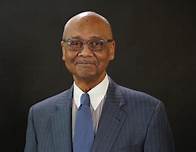 Robert Woodson
Robert Woodson“What Biden and the leftists are doing is rewriting American history and unfortunately, they are using the suffering and struggle of Black America as a bludgeon to beat America and define America as a criminal organization,” he continued. “It’s lethal . . . . And the message that they are sending is that all white Americans are oppressors and all Black Americans are victims. That exempts the Black community from any kind of personal responsibility. It’s really white supremacy to assume that Blacks have no agency . . . that they have no power over their own lives.”
Shelby Steele, is a political commentator specializing in race relations and his book, White Guilt: How Blacks and Whites Together Destroyed the Promise of the Civil Rights, is an excellent analysis of race in America. In his book he argues that “white institutions create policies such as affirmative action to give themselves moral authority, not to help blacks. A strong case can be made that high crime, divorce, unemployment, and school dropouts are a result of liberal policies that have harmed the black community.”
 Shelby Steele
Shelby SteeleSteele also wrote and narrated the 2020 documentary film, “What Killed Michael Brown.” It is a thought-provoking film that I highly recommend. It critically examines the ludicrous narrative that the lives of minorities are mostly controlled and defined by white racism.
While Critical Race Theory is one of the most dangerous concepts ever to bubble to the surface from the national cauldron of hair-brained schemes, it is not the only fatuous thing Biden has done (or will do) during his disputed occupation of the White House.
There is the imprudent idea to pack the Supreme Court by adding four more justices to the nine already there. There is his idea to make Washington D.C. a new state, thereby adding one new Democrat seat to the House and two more Democrat senators to the Senate.
Of course, we can’t forget his policy of open borders, his plan to derail the Second Amendment, his constant haranguing of conservatives by labeling them “insurrectionists” and “white supremacists,” and his obsession to federalize all future presidential elections via the House’s HR-1 Bill, otherwise known as the “corrupt politicians act.”
The question many Americans have is this: Will Biden achieve all of these dangerous and transformative ideas before his confused brain stops working, and Willie Brown’s old California concubine and number one squeeze, otherwise known as Kamala Harris, takes over?
Or will he muddle on, kept vertical by frequent vitamin B-12 injections and unchallenged by a shamefully acquiescent press corps that kowtows to the sycophants in the White House?
Only time will tell. In the interim, time is running out for a nation that was once the greatest and most powerful in human history, but which today is allowing a vociferous minority of anarchists, socialists, communists, and obtuse anti-American Americans to obliterate our republic from within.
God save us from fools.
Corruptissima re publica plurimae leges! — When the republic is at its most corrupt, the laws are most numerous!
April 11, 2021
Key West Today: Hemingway Would Hate It
[Yesterday, I posted about the Ken Burns documentary/biography on Ernest Hemingway that is currently airing on PBS and the pilgrimage I made to Hemingway’s house in Key West, Florida. Hemingway lived in the house in the 1930s during the apex of his career as a novelist. In this post, I point out that Hemingway would hate what has happened to Key West today. I hope you enjoy it]
Once upon a time, Key West was known for its fishing, sea salt refining, and salvaging operations. It was also the largest and wealthiest city in Florida.
Today, Key West is primarily known as a trap for tourists—hordes of them. In fact, last year some four million tourists ascended on the 7.4 square mile island, and its 25,000 permanent residents that are actually closer to Cuba (90 miles) than Miami (160 miles).
Some tourists come so they can say they visited the southernmost city in America; some are deposited there by giant cruise ships, and some come because they want to visit the place that Ernest Hemingway once called home and where he produced almost 65 percent of his work.
Having traveled to Key West, I am convinced that Hemingway would absolutely hate the place today.
Were he to walk from his house at 907 Whitehead Street to Sloppy Joe’s saloon (his favorite watering hole), Hemingway would have to elbow his way through throngs of tourists, tacky t-shirt stores, cafes, ice-cream stands, street performers, overpriced jewelry shops, shady art galleries, and bars—lots of bars with music blaring at a level Hemingway would no doubt have found annoying.
Hemingway would probably recognize the saloon at 201 Duval Street today. It hasn’t changed too much since 1937 when Hemingway was there knocking back Bacardi light rum Dobles, otherwise known as “Hemingway Hammers.” (Recipe is at the end of this post).
Locals will tell you that today’s Sloppy Joe’s is not the original Sloppy Joe’s. That bar is now called Captain Tony’s. It was there, from 1933 to 1937, that “Sloppy Joe” Russell, a charter boat captain and Hemingway fishing pal, ran a bar from a building that once housed the city morgue.
In 1937, Russell abruptly moved half a block to the current Sloppy Joe’s location, upset that his landlord raised his rent $6 a month. At midnight, his patrons, including (legend has it) Hemingway, helped him move lock, stock, and barrel to the current location.
Some locals insist that Hemingway provided Russell $5,000 to buy the new bar. Others point out that Hemingway removed the marble urinal from the old bar and took it home.
“I used the damned thing so much I figure I already paid for it,” Hemingway said. He set it up as an outdoor watering trough for his beloved polydactyl (six-toed) cat named Snow White. It is still there behind Hemingway’s house and Snow White’s six-toed descendants—all 40 or 50 of them—still drink from it.
Unlike the 1930s, today’s Sloppy Joe’s features a restaurant and gift shop loaded with Hemingway-related souvenirs. It also hosts the annual Hemingway Days Festival and Hemingway Look-Alike Contest.
I have to wonder what Papa would think about all of that.
I also wonder what he would think about the ubiquitous key lime pie shops that abound in the town where the dessert originated in the 1850s. They are everywhere and Key West is rife with arguments about which place has the best key lime pies.
 Key Lime Pie
Key Lime PieIf there is one takeaway from Key West and other hallowed places steeped in the nostalgia of bygone days (and nights), it is this: They are not the same unspoiled places they were when their reputations were evolving.
Take, for example, legendary wild-west towns like Virginia City, Nevada, or Dodge City, Kansas, or Tombstone, Arizona. When we visit these places we hope against hope they will be at least a little like they once were.
They are not. Like Key West, they are inundated with tourists surging through t-shirt shops and souvenir shops that sell everything from whoopee cushions to cheap jewelry.
But let’s not stop there. When I think of the venerated historical sites I recently visited in Europe it’s apparent how tourism has impacted them also. Take Rome’s Forum and the Coliseum, where for a few Euros you can have your picture taken with re-enactors dressed as Roman Centurions or Vestal Virgins. And yes, you can buy t-shirts and other junk nearby.
Or how about England’s enigmatic collection of monoliths at Stonehenge and the Tower of London complex along the Thames? More t-shirt shops, more throngs of tourists, more junk in nearby shops.
With increasing numbers of people traveling further and faster than ever before, places with even a modicum of historical significance are now targets for tour operators and their convoys of pervasive buses. Even Machu Picchu, that ancient Inca city high in the Peruvian Andes that was once visited by a handful of hearty travelers, is now teeming with flocks of sightseers.
The reaction of many tourists is often: “Gee, I expected something more authentic with fewer people.”
Wishful thinking.
Key West has done a good job of preserving some of its past. Hemingway’s 165-year-old house, for example, is in surprisingly good condition given the number of tourists who traipse through it to ogle the furniture and other trappings of the renowned Nobel-prize-winning author. It also boasts a cadre of well-informed docents who will lead you through the house and grounds while providing you with running commentaries that are highly instructive and enlightening.
 Inside Sloppy Joe’s
Inside Sloppy Joe’sEven Sloppy Joe’s, with its ancient, wobbling ceiling fans, jalousie doors, and original long curving bar has managed to preserve some authenticity. It seems almost as grungy and cluttered as it was back in the day, and the booze still flows liberally.
And Key West, even with its plethora of overpriced shops, ice cream stands, rubber-wheeled trolleys, conch trains, and street performers, retains a kind of eccentric charm.
Maybe it’s the utter tackiness of the place, the crush of tourists, or the vague mystique associated with Hemingway, it’s most famous resident.
Or maybe it is something Hemingway once said about Key West when asked to describe the place.
“Key West is the St. Tropez of the poor,” he said.
April 10, 2021
A Hemingway Documentary & a Pilgrimage to “Papa’s” Key West Abode
PBS is currently running a new three-part documentary about Ernest Hemingway by Ken Burns and Lynn Novick which explores the famous author’s own image-making. In the documentary, we see Hemingway as a “man’s man–” a battle-hardened war veteran, a big game hunter, a deep-sea fisherman, a brawler, a boozer, a bullfighting devotee, a seducer of women.
But just how true were these carefully crafted images? Michael Katakis, the manager of Hemingway’s literary estate tells us in one episode: “I hate the myth of Hemingway. It obscures the man. And the man is much more interesting than the myth.”
Irish author Edna O’Brien explains that Hemingway’s weakness was that he loved an audience. “Newspapers and magazines would show him hunting in Africa, fishing off the Florida Keys, carousing with soldiers during the second world war, always glamorously virile,” O’Brien says in one part of the documentary. “His stories and novels—about hunting and fishing, bullfighting and battle-fighting—fused him with his characters in the public imagination.”
Despite the myth-making, there is no doubt that Hemingway restructured American literature. Literary critics often describe Hemingway’s style as one of omission, of things left out or left unsaid. His writing doesn’t leave things out, though, so much as it veils them. This is what he suggested in his iceberg theory: that stories, like icebergs, may derive their heft from things submerged or unseen.
“If a writer of prose knows enough about what he is writing about he may omit things that he knows and the reader, if the writer is writing truly enough, will have a feeling of those things as strongly as though the writer had stated them,” Hemingway once explained. “The dignity of an iceberg is due to only one-eighth of it being above water.”
I wonder how Hemingway would be tolerated or perceived if he were emerging as an author in today’s mawkish, self-indulgent world, where men and boys are being “feminized” in schools and media and where masculinity is often disparaged as “toxic” and in need of relentless reassessment.
The documentary seems intent on stripping away the myth of the man while exposing his personal struggles such as his life-long battle with depression, his insecurities, and his need for the women in his life to appease and sustain him emotionally. But try as it might, it cannot diminish Hemingway’s undeniable genius as a storyteller and his indisputable and lasting impact on literature.
That’s why a couple of years ago, I made a long-overdue pilgrimage to Key West, Florida to see where Hemingway once worked and lived. Here is a post I shared after that journey. I hope you will find it illuminating. And, by the way, if you haven’t seen the Ken Burns PBS documentary on Hemingway, I highly recommend it.
A Pilgrimage to “Papa’s” Key West Abode
The house at 907 Whitehead Street in the heart of Old Town Key West looks about the same as it did when Pulitzer and Nobel-Prize winning author Ernest Hemingway lived there from 1931 to 1940.
But that’s where the similarity ends.
The 165-year-old limestone two-story house with its wrap-around veranda and lush gardens of coconut palms, frangipani, bougainvillea, and African tulips, is now a museum offering tours at $13 a head to thousands of tourists who make the 150-mile, four-hour drive from Miami through the Florida Keys to Key West.
[image error] Hemingway’s Home in Key WestTour guides lead visitors through the house’s modest rooms explaining various architectural features, furniture pieces, and artwork. They also point out the 40 six and seven-toed cats that have the run of the house and gardens.
A highlight of the tour is a peek at the upstairs room of the small two-story guest house behind the main house where Hemingway penned such classic works as Death in the Afternoon, The Green Hills of Africa, The Snows of Kilimanjaro, To Have and Have Not, The Short Happy Life of Francis Macomber, and For Whom the Bell Tolls. It was here that he also wrote dozens of short stories, poems, newspaper columns, and magazine articles.
[image error] Hemingway’s OfficeHemingway was a prolific writer who rose early and began writing around eight a.m. and usually finished at noon. Then it was often off to Sloppy Joe’s bar for an afternoon of drinking and gabbing with pals or heading out to sea on his fishing boat, The Pilar.
For a journalist and writer like me, visiting the place where Hemingway produced 65 percent of his work, is a bit like making a religious pilgrimage to The Vatican, Jerusalem, or Mecca.
In 1961, after his suicide in Ketchum, Idaho, the unpublished manuscript that would later become the novel Islands in the Stream was found in a vault in the property’s garage.
I have always felt a fragile connection to Ernest Hemingway because of where we both began our journalistic careers. It was at the Kansas City Star. He worked there between 1917 and 1918 cranking out police stories and other articles. I began my career there in 1968 as a summer intern from the University of Kansas’ William Allen White School of Journalism.
While working at the Star, I recall reading some of Hemingway’s clips. In those days, reporters didn’t have bylines, but a reporter who mentored me at the paper let me see Hemingway’s stories on microfiche. His stories were crisp, punchy, and filled with insightful descriptions—all elements that would eventually characterize and define his writing.
Years later Hemingway recalled how his training as a Kansas City Star reporter prepared him for a successful career as an author.
“I learned how to use short sentences and eliminate superfluous words,” he said. “These are the best rules I ever learned for the business of writing.”
As many wise young reporters do, Hemingway latched on to a seasoned newspaperman named Lionel Calhoun Moise as a mentor. Moise was probably the biggest influence in Hemingway’s journalistic career.
[image error] Hemingway’s studioMoise, who was once described by a fellow Star reporter as “a big, brutal, son-of-a-bitch, who loved to drink and brawl,” believed that writers needed to experience what they wrote about. He told Hemingway to write crisply, with a minimum of description. Ultimately, Hemingway learned to let action and dialogue move the story along.
My mentor at the Kansas City Star was a 65-year-old reporter named Harry Hannon. Unlike Moise, Harry was a short, wiry man who walked with a limp. His beat, among other places, was the U.S. Federal Prison at Leavenworth, Kansas, and the Kansas State Prison just down the road in Lansing, Kansas.
Harry not only knew the wardens and many of the guards at both prisons, he knew many of the inmates—including some serving life sentences for murder and other nefarious crimes.
“You want some life experiences?” Harry asked me once as we walked through the Federal penitentiary. “You will hear plenty of those in here.”
Harry taught me things from the old Kansas City Star stylesheet like: “Say he was eager to go, not anxious to go. You are anxious about a friend who is ill;” and “He died of heart disease, not heart failure—everybody dies of heart failure;” and finally, “Don’t say, He had his leg cut off in an accident. He wouldn’t have had it done for anything.”
Hemingway would have been given the Star’s style sheet. I have attached a copy of a 1915 version at the end of this post.
Harry never made the trip to Key West to visit Hemingway’s famous abode. But a few years later, after he retired from the Star, he came to Chicago for the horse races at Arlington Park. At the time, I was a new general assignment reporter for the Chicago Tribune.
[image error] Hemingway doing some self-editingWe had dinner together at the Palmer House hotel where he was staying and then I took him on a tour of the Tribune’s sprawling newsroom where reporters were pounding out stories on big Underwood typewriters for the final edition. The raucous sound of phones ringing, typewriters clacking and agitated reporters yelling “Copy!” at copyboys and copygirls, resounded throughout the vast smoke-filled room.
“Now this is a real newsroom,” Harry said as we observed the kinetic atmosphere that once upon a time defined the city room of a big city newspaper. “I envy you.”
Harry never met Hemingway at the Star. He began his career at the paper a few years after Hemingway moved on.
“I remember some reporters talking about him,” Harry told me. “They remember him as a fresh-faced kid of 18 or 19 who moved to Kansas City from Chicago. He sometimes wore a red and black checkered hunting shirt to work. A lot of folks didn’t like the way the dressed, but hell, he worked mostly out of the office on the street, covering crime, fires, chasing ambulances, riding with the cops, and hanging out in hospital emergency rooms, so who cared?”
[image error] Ernest Hemingway in 1918As a general assignment reporter for the Chicago Tribune, I covered the same kinds of stories. It was the best training I ever got—my journalism courses at the University of Kansas notwithstanding.
Later Hemingway would cover war and mayhem for various newspapers and magazines, as did I for the Tribune.
Like Hemingway, I learned to write from my experiences. Unlike Hemingway, however, my fiction, while infused with many of my experiences covering wars and revolutions, does not rise to the level of virtuosity that Hemingway displayed.
Am I discouraged by that? Not at all. While Hemingway often said that writing was the hardest work he ever did, he also said telling a good story gave him the greatest joy.
Writing—whether fiction or non-fiction—is storytelling. As long as I can write for the sheer joy of it and tell a few compelling stories now and then, I will be the happiest of hacks.
April 5, 2021
An Essay for All Those Who Don’t Get It
I don’t know who E.P. Unum is–though I do know that handle stands for E Pluribus Unum. Those Latin words are the traditional motto of the United States and mean: “Out of many, one.” So, whoever is writing under the name of “E. P. Unum” is paying homage to one of the founding philosophies of this country while preferring to conceal his or her true identity. In any case, Mr. or Mrs. or Ms. Unum has penned a fine essay here–one that I hope as many Americans as possible will read with an open mind.
There is great truth in what is written here, and within that truth, there is also a warning. We are on the verge of losing our Republic to those who want to turn us into the Soviet Union or China or perhaps even Cuba or North Korea. If that happens, then the millions of Americans who are sleeping while the mendacious and perfidious Biden administration destroys our Constitution and rips up our Bill of Rights deserve what they get–just as Cassius warned Brutus in Shakespeare’s play. I hope those Americans wake up before we lose our Republic!
Please read on!
By E.P. Unum
“The fault, dear Brutus, is not in our stars but in ourselves.” (From Shakespeare’s “The Death of Julius Caesar,” Scene I Act II, Cassius to Brutus plotting to Assassinate Julius Caesar.)
The legendary broadcast journalist and war correspondent, Edward R. Murrow used the above in his effort to reinforce the age-old principle that journalists cannot shrink from their responsibility, to tell the truth, and to never sacrifice that responsibility on the altar of convenience or succumb to bombastic, inflammatory rhetoric unsupportive by facts and hard evidence.

Where have you gone, Mr. Murrow? We sure could use your journalistic integrity now.
This essay is for all those who don’t get it:
Do you now understand why there was never any action against the Clintons or Obama, how they destroyed emails and evidence and phones and servers, how they spied and wiretapped, how they lied to the FISA Court, had conversations on the tarmac, sent emails to themselves to cover their asses after key meetings, how Comey and Brennan and Clapper never were brought to any justice, how the FBI and CIA lied, how the Steele Dossier was passed along, how phones got factory resets, how leak after leak to a corrupt, accomplice media went unchecked, why George Soros is always in the shadows, why they screamed “Russia” and pushed a sham impeachment, why no one ever goes to jail, why no one is ever charged, why nothing ever happens?
Now you know why there was no wrongdoing in the FISA warrants, why the Durham Report has been delayed, again, and with each passing day we will likely never see it; why Hunter Biden will likely walk free, perhaps with a fine and a slap on the wrist and some words to “go and sin no more.” Why the FBI sat on Hunter Biden’s laptop for over eleven months. Why the mainstream media, Twitter and Facebook, withheld publishing anything about the Hunter Biden scandal, which has close and direct links to now, President Joe Biden.
Why the Biden’s connection to China and massive cash payments were overlooked and hardly covered in the mainstream media, why, like “Manna from Heaven,” a lethal virus from China was unleashed on the western world, the perfect weapon, an invisible scourge that could be weaponized politically to bring down the greatest economy in the history of humanity and usher in unverifiable mail-in voting.
By now, you surely know why the media is 24/7 propaganda, and lies, why true journalism is dead, why up is down and down is up, right is wrong and wrong is right, why evil is good and good is evil. By now, you surely know why social media silences the First Amendment, speaks over the President of the United States and bans him from using their services. This has been the plan by the Deep State all along.
They didn’t expect Trump to win in 2016. He messed up their plans, delayed them a little. They had to get him out, so they concocted lie after lie, falsified information, tried unsuccessfully, twice, to impeach him! They assaulted him in the press every single day while he continued to serve the American people and put America First! They failed in all their attempts. But they weren’t about to let it happen again.
Covid was China’s gift to the Global Elites. It was everything the Deep State needed to rid themselves of the one man who could stand in the way of their takeover of America. So, Covid was weaponized, Governors helped shut down their states, the media helped shame and kill the economy, and the “super lucky unverifiable mail-in ballots” were just the trick to make sure the career politician, with a track record of zero accomplishments in 47 years, allegedly with his hands in Chinese payrolls; a man that couldn’t finish a sentence or collect a crowd, miraculously became the most popular vote recipient of all time! If you are foolish enough to believe that this was all on the up and up, there is a bridge in Brooklyn N.Y. I’d like to sell you….cheap.
Ladies and Gentlemen, you have just witnessed a silent coup, the overthrow of the US free election system, and the seeming end of our Constitutional Republic, and the merge of capitalism into the slide toward socialism and communism. What will happen next? Well, here is a look down the corridor of the future:
Biden’s fiasco at the southern border is just the beginning. By summer, we will have hundreds of thousands of people trying to enter the United States illegally, and they will likely be successful because that is what the left-wing zealots in the Democrat Party want. Joe Biden invited them in! You will continue to see agencies like CBP and INS, and Homeland Security muzzled or possibly deleted. Law enforcement will see continued defunding. Criminals will be released without bail, free to commit crimes again and again.
Soon, the idiots on the left will try to restrict our Second Amendment Rights to own weapons and will add this to the list of additional items to tax. There will be a concerted movement to make Washington D.C. a State along with Puerto Rico because democrats can then stack the House and Senate with additional votes. There will be an assault on the Electoral College with an effort to eliminate it. American history will be a thing of the past (if it isn’t already) erased in favor of Revisionist History. By fall 2021, you will see mounting pressure to pack The Supreme Court.
If you work in the manufacturing or oil industry, get ready. Biden’s day one action to reverse the Keystone XL Pipeline was just the beginning. There will be a full-scale attack on oil and gas because these are considered “evil.” In one stroke of his pen, Biden wiped away decades of effort that culminated under President Trump in making the U.S. energy independent and, for the first time in history, an oil-exporting country. Now, we will once again be dependent on Middle Eastern Oil while the starry-eyed intelligencia in Biden’s Cabinet play around with trying to make our nation carbon-free by 2035, regardless of what other countries in the world are doing!
If you run a business, brace for impact. Maybe you’ll be on the hook for slavery reparations like some people in Illinois are today, or have your suburbs turned into Section 8 housing. Feckless Joe Biden has just signed a $1.9 trillion American Rescue Plan that doesn’t rescue anyone and puts us further in debt while he pursues the left’s Utopia Goal.
Our taxes are going to increase significantly, regardless of the empty pledges of Joe Biden. Businesses will pay more, and the flight of capital offshore will accelerate, resulting, once again, in massive unemployment. Do you really believe Joe Biden when he says that his tax plan will focus on the “wealthy paying more and that families making less than $400,000 will not pay a penny more in taxes”?
What do you think the wealthy will do? For starters, like businesses, they will move someplace else, and we, the middle class, will end up footing the bill. But that should not come as a surprise because that is what the people in power want….the dumbing down of citizens…and more power concentrated in big government.
In Joe Biden’s America, there is not a single problem that exists that cannot be solved by big and more expansive government throwing more and more taxpayer money at it. I bet you found it exciting to learn that Biden’s new Secretary of Defense, General Lloyd Austin, proudly took time to focus on how the Pentagon has designed new, more fashionable uniforms for pregnant female soldiers, sailors, and marines and that we will spend our tax dollars providing surgical procedures for those in the military who wish to be transgender.
Doesn’t that make you feel safe and comfortable? I can’t wait to hear how we intend to deal with the Chinese Navy who now has more ships and submarines than we do. And make no mistake, our enemies, China, Iran, Russia, and North Korea, are watching all of this unfold before them, and they will soon seize upon the opportunity our bungling, babbling weak-kneed President offers them. They are watching closely as Biden extends $75 million in aid to the Palestinians, an affront to our ally Israel. They are laughing at us as we grovel at the feet of Iran, seeking to begin a new round of talks towards rejoining the nuclear agreement negotiated by Obama and John Kerry.
And the spending spree is not yet done. Biden is seeking to push another $2.3 Trillion Infrastructure Bill through Congress, only 7% of which is directed to infrastructure. What could go wrong? Well, think about it this way: If you go shopping for bread or milk and notice that there is an enormous supply of bread and milk at the supermarket, what would you expect the prices of those two staples would be? You would expect because of the oversupply of milk and bread, that prices would go down. It’s that way with money because money is essentially a commodity, a product.
The only way Biden and his gaggle of miscreants can finance their spending spree is for the Federal Reserve to print more money. The problem is that when the Fed cranks up their printing presses, they fuel inflation because there is no corresponding increase in productivity. We thus have “too many dollars chasing too few goods,” the very definition of inflation. Suddenly we will find our economy following the paths of Argentina, Venezuela, and Cuba. If you don’t know the history of these economies, you should do your homework and find out.
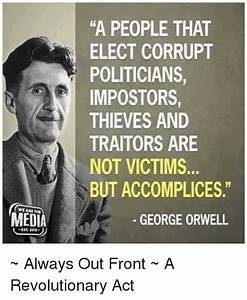
I could go on and on. There is no real recovery from this sort of tremendous civil unrest and civil disobedience, possibly civil war. The elections from this point on will likely be decided by New York City, Chicago, and California. At that point, the Republic will be dead. Mob rule, appeasement, and corruption will run rampant. The candidate who offers the most from the Treasury will get the most votes. But the votes really won’t matter, just the ones received and counted. That precedent has been set. As I type these words into my computer, I note where Major League Baseball has pulled their annual All-Star Game from Atlanta, Georgia, because the White House and the left-leaning media have taken the position that Georgia’s new voting law is racist and unconstitutional. Since when is the MLB political?
By now, you all have heard the story. “Benjamin Franklin was walking out of Independence Hall after the Constitutional Convention in 1787, when someone shouted out, ‘Dr. Franklin, what have we got? A Republic or a Monarchy?’”
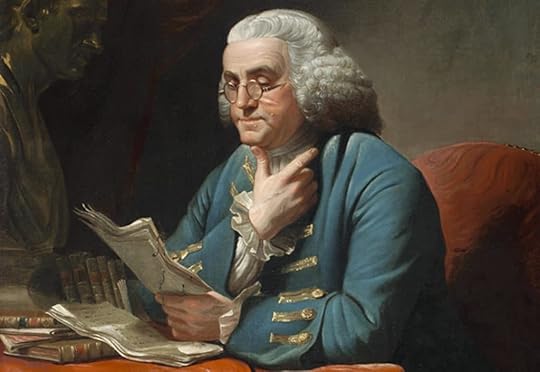
Franklin responded, “A Republic if you can keep it.”
Ladies and gentlemen, The ascension to the Presidency of Joe Biden, one of this nation’s greatest frauds, incompetents, and crooks, along with Vice President Kamala Harris whose claim to fame and experience on the national stage is……nothing……has ushered in the pending collapse of our Republic, the last bastion of freedom in the world, the shining city on the hill.
And remember this. In dealing with the China Virus, which is now a year old, we locked down the greatest economy in the history of humankind over a virus that has a 99.96% recovery rate. The government shut down religion, and people turned from God. They turned from family. They turned from Flag and Country. People embraced degeneracy culture. They celebrated and looked to fools for guidance. They worshipped themselves selfishly as they took for granted what many sacrificed and died to give them. People disregarded the lessons of history and all it teaches. On their watch, America just died a little. I’m afraid she’ll never be quite the same again.
I used to sit on the stoop in my NYC neighborhood as a young boy and listened to my grandfather, who told me time and time again, in Italian, “you can sometimes trust a thief, but you can never trust a liar.” I may be wrong, but I believe with all my heart and soul that the greatest tragedy of this experience is that we continue to allow the people we elected to run our government to lie to us.
I studied the works of Edward R. Murrow and marveled at his ability both in radio and then pioneering such successful CBS TV shows like “Person to Person,” “CBS Reports,” “Small World,” and “See it Now.” Here is one of my favorite quotes from Mr. Murrow, one I use in teaching my college students every semester:
“To be persuasive, we must be believable; to be believable, we must be credible; to be credible, we must be truthful.”
It is a sad commentary on the current state of our media that they lack this very basic of all responsibilities.
Cassius got it right: “The fault dear Brutus is not in the stars but in ourselves.”
April 4, 2021
Stop Critical Race Theory Before It Destroys America
Today, I am reprinting a commentary on the damage Critical Race Theory is doing to children in our schools and to our nation as a whole. It is written by Roger L. Simon, a novelist, and screenwriter. I have posted on Critical Race Theory before with my own thoughts about CRT which coincide with what Roger Simon is saying here. Take a look. His piece is eye-opening.
ROGER L. SIMON
The U.S. Civil War was an extraordinary and unique event in world history. For the first and only time, a country sacrificed hundreds of thousands of its own citizens in a righteous fight to end the evil of slavery.
That fight had begun years before with many heroes risking their lives, but the war was the moment of truth. Slavery would be abolished or the country would cease to exist. Good prevailed.
Since then, the struggle for racial equality has continued and, despite many twists and turns, some extremely disheartening has generally headed in the right direction … until now.
Something called “critical race theory” (CRT) intervened to turn our society around, head it back toward racial enmity and, to be blunt, destroy our country, and with it our common humanity unless it’s stopped.
Unlike slavery, which was overt, CRT is a growing cancer infecting our schools, media, entertainment, and businesses. It’s everywhere, often unseen and more often not even known or recognized by a large percentage of the public, so all the more dangerous.
Many definitions and explanations of CRT exist, a literal phantasmagoria of intellectual obfuscation, the stuff of theses and “studies,” some of it quite brilliantly, if sophistically, executed, but CRT boils down to something quite simple.
Martin Luther King Jr.’s justifiably famous dream that the day will come when we judge each other by our characters and not by the color of our skins has been turned on its head.
The color of our skins is to be the be-all and end-all of our existences, no matter what, no escape. That is what determines our position in life and our fate, beyond class and, apparently, beyond our character as well (i.e., how we actually behave and what we have done).
Race is everything. In order to be considered good, you must acknowledge it, literally bow to it, and behave accordingly.
And, it goes without saying, the Caucasian race (variously defined according to the situation—there is now something called a “White Hispanic”) has, in this construct, done virtually everything that is bad and is inherently the root of all evil. Hence, we have “white privilege,” “white ’splainin’” and so forth.
Minorities cannot be racist, only whites.
This idea doesn’t comport remotely with reality or with the DNA of homo sapiens (in which race is a barely visible, minor component) and is, in essence, racist itself.
Marxist Intellectuals
CRT was an outgrowth of Critical Theory, which was developed by frustrated European Marxist intellectuals who were trying to deal with the failure of the working class to do what they were supposed to— opt for the workers’ state.
They gave up on the recalcitrant workers and decided the route to communist nirvana was a “march through the institutions” (media, the academy, entertainment) to take over those three key areas and inculcate their form of Marxism from above.
It worked to a great extent—just look at what has become of these institutions throughout the West—but that wasn’t enough. A coup de grace was necessary. Western civilization must crumble altogether and be replaced by their diktats of how we must all live, act, and think— or else.
This couldn’t be done easily by Westerners, except perhaps in the background, since the classical liberalism they abhorred was a product of the West.
Enter critical race theory. That would cement their totalitarian stranglehold on society because race is immutable. (The sprinkling of outliers who pretend they are from another race adds up to very little.) “This is the army, Mr. Jones” became “You are your skin color, Mr. Jones.”
People who grew up admiring George Orwell, or saying they did, were suddenly willingly living out “Animal Farm” as if they didn’t realize it was a satire.
“Four legs good, two legs bad,” was becoming an American reality, only it was “Black good, white bad, yellow good, white bad, brown good, white bad.”
If you wanted to invent an ideology that actually created racism where it doesn’t exist, you could do no better than critical race theory. It’s a superb method of controlling society to your advantage.
Every aspect of our culture has been infected with this absurdity, right up to the corporate board rooms. Even Coca-Cola executives are now instructing us on the dangers of “whiteness.” Do they actually believe this hogwash? Who knows? Perhaps they are just scared, cowards playing along with the zeitgeist to keep their lucrative jobs. But if that’s so, it’s worse.
Taught to Hate
Most importantly, the ideology has infected our schools, even at the lowest levels, to the degree that young children are being hard-wired to hate or distrust each other and, even more sadly, themselves.
White kids—no matter their social class, no matter at what point their families came to America, in many cases decades and more after slavery, fleeing genocides, pogroms, the most abject poverty or whatever—are being taught they are oppressors and must spend their lives expiating the sin of their skin color.
What do you think that does to their psyches, whatever color they are, whatever side of this they are on?
If you wanted to invent an ideology that actually created racism where it doesn’t exist, you could do no better than critical race theory.
It’s a superb method of controlling society to your advantage. Hitler, of course, had his own form of CRT in his master race theories. The Soviet Union had internal passports on which everyone’s ethnicity was specified, going beyond mere skin color to include their region and religion as well.
With the blessing of CRT, one of the major goals of the civil rights movement, integration, has also been flipped on its head, back to segregation, with institutions such as Columbia University holding separate graduation ceremonies for different ethnic and racial groups. Not that long ago, this would have been considered a racist outrage by the same people.
These institutions are now leading the charge against free speech, with critical race theory as their intellectual underpinning. After all, the Bill of Rights was written by white men. It had to be thrown away.
This attitude didn’t emerge out of nowhere. A certain amount of it was present years ago in the Black Power movement and the Black Panthers. But it has reemerged stronger than ever.
Not only did critical theory need yet another turn of the ideological screw, but another factor was also prominent in this recent rise of CRT. It began to gain acceptance during the very time America elected a black president, not once but twice, providing evidence that a racist society was finally, at least for the most part, in the rearview mirror.
That couldn’t be countenanced by the not inconsequential group that relied on opposing racism for power and income, indeed for their own survival and self-image. Critical race theory was therefore welcome to them as it was to whole sectors of what could be called the American nomenklatura, known to others fallaciously as “elites.”
Now it’s everywhere, with Antifa and Black Lives Matter the leading exemplars of CRT played out in the streets.
Local Action
There is some good news, however. Like a lot of things now, to a surprising degree, this anti-democratic, racially divisive onslaught can be stopped best locally. This is especially true at the critical school level where parents, all of us really, can organize and step forward to stop the indoctrination.
During COVID-19, many parents were able to see on Zoom for the first time what their children were being taught and were deeply disturbed. They must follow through and put a stop to it.
This will take bravery and conviction that many have never shown before or even know that they have. But they do. Many are beginning to show it across the country.
Among the most courageous doing so now are black men and women who see more clearly, feel more acutely, than any of us the disastrous betrayal of the civil rights movement and of their own people by critical race theory and are opposing it vehemently.
They are the heirs of Dr. King.
As we used to sing in those days, “Black and white together, we shall not be moved/Like a tree standing by the water/ We shall not be moved.”
Roger L. Simon is an award-winning novelist, Oscar-nominated screenwriter, co-founder of PJ Media, and a columnist of The Epoch Times, from where this commentary was reprinted.
March 30, 2021
Ramblings about the Late Larry McMurtry
His 30 novels, many of which have been turned into classic films and television series, such as The Last Picture Show, Lonesome Dove, Terms of Endearment, and Comanche Moon, are brilliant in their ability to delineate convincing characters and bring them to life.
Along with the late Elmore Leonard, McMurtry was one of my favorite contemporary writers. He not only created tough, gritty characters, but vulnerable and fragile ones too.
His books brought him numerous awards, including the Pulitzer Prize for literature in 1986 for Lonesome Dove. In 2005, he and co-author Diana Ossana won an Oscar for writing the screenplay for “Brokeback Mountain.”
McMurtry’s first novel, “Horseman, Pass By,” was published in 1961, and was turned into the 1963 film “Hud,” starring Paul Newman. That was the first of many film or television adaptations of McMurtry’s works.
“The Last Picture Show,” his 1967 coming-of-age story set in a small town similar to Archer City, was made into a 1971 film by Peter Bogdanovich.
“Terms of Endearment,” McMurtry’s 1975 novel about the relationship between a mother and her daughter, was turned into a 1983 film by James Brooks and starred Shirley MacLaine, Debra Winger, and Jack Nicholson. A major commercial success, the film was nominated for 11 Academy Awards and won five, including best actress for MacLaine and best-supporting actor for Nicholson.
In 1985, McMurtry published “Lonesome Dove,” a historical saga about two Texas Rangers and a cattle drive from Texas to Montana. After winning the Pulitzer Prize, the book was turned into an epic four-part TV miniseries starring Tommy Lee Jones and Robert Duvall. The series received multiple Emmy nominations and won seven.
So, that’s a little bit about McMurtry’s literary and cinematic successes–most of which you probably already knew.
What is probably NOT known about this literary giant, is the fact that he wrote all of his books on a typewriter. Yes, a typewriter. Not a computer.
“I thank my typewriter,” McMurtry said when he accepted a Golden Globe Award for the Brokeback Mountain screenplay. “My typewriter is a Hermes 3000, surely one of the noblest instruments of European genius. It has kept me for 30 years out of the dry embrace of the computer.”
I know what he meant. I loved the portable 17-pound Olivetti Lettera 32 typewriter I carried with me when I was working as a foreign correspondent for the Chicago Tribune.
That Olivetti never failed me, though it took a severe pounding as I jumped on and off helicopters in places like Vietnam and Cambodia, bounced down rutted roads in jeeps and trucks in El Salvador and Afghanistan, and exposed it to 110-degree temperatures and monsoon rains in the Amazon jungle.
Its solid, blue metal shell behaved like armor plating. No matter how much I threw that typewriter around or how often I dropped it when I unzipped the vinyl case and pulled it out, the platen always held my paper in position, and the keys always worked.
In 1975, this was state-of-the-art technology. Tough. Dependable. Cheap. Easy to maintain.
Today that Olivetti resides on a shelf in my garage. And I am sure if I cranked a sheet of paper into it and began banging on the keys, those low-tech black letters would start marching, albeit haltingly, across the page, just like the old days.
But beyond its sturdiness and durability was the way I wrote with it.
McMurtry thanked his Hermes 3000 typewriter because “It has kept me for 30 years out of the dry embrace of the computer.”
I know what he meant. When you write with a typewriter you are forced to plan ahead and think about what you are going to write because unlike a computer, a manual typewriter is unforgiving when it comes to mistakes. You can’t just hit a backspace bar and erase your mistakes.
But with a computer, you can write any kind of gibberish you want and the word processing software will make sense of it via a grammar or spell checker and even offer you alternatives to the faulty sentence you have just written.
While that may be fine for most people, writers (and I consider myself one—though certainly not in McMurtry’s or Leonard’s class) prefer NOT to be coached or shamed into writing perfect English.
An author might use bad English or faulty grammar deliberately or construct an incomprehensible sentence because the story calls for it.
Like McMurtry, I use a lot of 19th century vernacular in my books—specifically, the kind I heard in rural Kansas when my great-grandparents and grandparents spoke.
McMurtry grew up and lived in Archer City, Texas, a town with a population of 1,834 souls just south of Wichita Falls, Texas.
I spent a lot of my early years in Greenleaf, Kansas—a town of about 650 people when I was living there.
 Greenleaf, Kansas, ca. 1948
Greenleaf, Kansas, ca. 1948
One of the things I notice about writers is that the best ones listen—really listen—to the way people talk, not just to what they say, but HOW they say it. And I have noticed, people who live in small towns like Archer City, Texas or Greenleaf, Kansas, talk differently from people in Chicago, or Los Angeles, or any other inhospitable and manic metropolis.
For one thing, they talk much slower and usually with conspicuous thriftiness of words—the way retired Texas Rangers Captain Woodrow Call and Captain Augustus McCrae do in Lonesome Dove; or the way Billy Battles and his shadow riding Cousin Charley Higgins do in my Finding Billy Battles trilogy.

Here’s McMurtry using an economy of verbiage to talk about writing:
“You expect far too much of a first sentence. Think of it as analogous to a good country breakfast: what we want is something simple, but nourishing to the imagination. Hold the philosophy, hold the adjectives, just give us a plain subject and verb and perhaps a wholesome, nonfattening adverb or two.”
“Writing is a form of herding. I herd words into little paragraph-like clusters.”
The world has lost one of its greatest literary shepherds.
RIP Larry McMurtry.
In 1975, this was state-of-the-art technology. Tough. Dependable. Cheap. Easy to maintain.
March 29, 2021
Biden Meets the “Press”
Like a lot of Americans, I subscribe to Mike Huckabee’s newsletter. I was going to write my take on Biden’s woeful press conference (Biden love-in is probably a better description), and I still might, given that there probably won’t be another such festive jamboree for another three or four months–if then.
But Mike has nailed the ludicrous pretext for a press conference that Americans witnessed last week. Journalists (if you can call them that) during that dismal affair should be ashamed of themselves–not only for the softball questions they lobbed underhand at the stumbling bumbling Biden–but for agreeing to submit their questions in advance and to be “called on” like a room full of second-graders, rather than insisting on the free-for-all press conferences that Donald Trump held in which reporters yelled questions and actually argued with the president. Times certainly have changed, and it is obvious what the political affiliations are of the obedient scribes who pretended to be serious reporters.
Having said all of that, take a look at how former presidential candidate and former Arkansas Governor Huckabee had to say about the fawning press and their sacrosanct Great Mumbler.
By Mike Huckabee
On Thursday, over two months into his presidency, Joe Biden finally held his first press conference. His media cheering section is trying to defend it as triumphant proof that he’s totally in charge of both the executive branch and his faculties. But while he might have cleared their bar, I haven’t seen a bar set so low since Animal Planet aired the Snail Olympics.
I’ve seen leftists on social media claim that Biden’s clinging to his detailed notes on who to call on and what to say is nothing out of the ordinary, that all Presidents did that. No, they didn’t. They found one photo of Trump holding a note with a message to repeat on it as “evidence,” but didn’t mention that he would stand up nearly every day for an hour or more, answering unscripted and usually hostile questions from anyone who wanted to grill him.
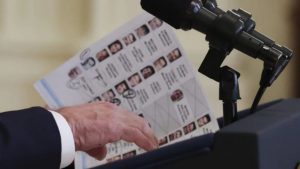 Biden’s list of reporters & their questions
Biden’s list of reporters & their questionsMaybe Biden’s performance seemed better to some than it really was just in comparison to the cringe-worthy job the “reporters” did. After spending four years going after Trump like a pack of rabid wolves, they suddenly transformed into tranquilized poodles, quietly waiting their turns to ask pre-approved questions and await their scripted responses with no tough follow-ups. They made the North Korean press’s treatment of Kim Jong Un look hard-hitting.
The most embarrassing moment came when fawning PBS (your tax dollars at work) reporter Yamiche Alcindor gushingly suggested that the reason so many migrants are flooding over the border is that he’s such a “moral, decent man” that they want to come here and trust him with their unaccompanied minors.
Or maybe they think he’s just so sweet; they want to come to kiss his feet to see if they taste like sugar. I’ll bet she thinks that.
Aside from the pre-scripted answers and the sycophantic press, here are a few other takeaways:
Biden thinks he’s going to run for reelection in 2024 , when he will be 82 years old, five years past the average US male lifespan. This despite him already giving answers like this: “I have never been particularly poor at calculating how to get things done in the United States Senate. So the best way to get something done, if you, if you hold near and dear to you that you like to be able to…anyway…”He ran as a moderate, bipartisan unifier, but he now sees himself as the most “transformative” President since FDR, and he’s willing to do away with the Senate filibuster in order to steamroll a far-left agenda through with only 50 votes plus Kamala Harris to break the tie. Here he is defending the importance of the filibuster in 2005 . Does he remember that speech? Or 2005?He even suggested the Republican Party might not exist by 2024. Personally, I think the Republican Party will exist for the same reason it was founded in the first place: someone has to stand up against the Democrats’ addiction to ordering powerless minorities to shut up and do whatever they’re told. Since Biden claimed to have been in the Senate for 120 years, I assume he remembers that.
Biden claims it’s okay to destroy Senate norms he once defended because he and his party’s radical left programs are popular in the polls. I won’t repeat what I’ve already written over the past few days, but in a nutshell: his net approval rating in the Rasmussen daily tracking poll was -10 points and falling; support for giving illegal immigrants a pathway to citizenship has plummeted 14 points since January to 43%; and majorities of all demographics, even blacks, and Democrats, support voter ID laws that are among the election integrity safeguards he wants to abolish.
Since everything that gets in the way of the Democrats’ lust for all-consuming power is now “racist” (even fossil fuels – I kid you not), Biden tried to paint attempts to insure the honesty of elections as racist with one of the weirdest lines ever :
“What I’m worried about is how un-American this whole initiative is. It’s sick. It’s sick. I’m convinced that we’ll be able to stop this because it is the most pernicious thing— this makes Jim Crow look like Jim Eagle.”
FYI: Democrats created Jim Crow laws. “Jim Eagle” is apparently a cartoon character created in Joe Biden’s mind. And is there any idea in government today more racist than the condescending claim that blacks are too dumb or helpless to be able to obtain a legal ID? By the way, studies have found that voter ID laws do not depress voter turnout. The only thing they suppress is vote fraud, which means black and Hispanic voters who voted for Trump would not get their votes canceled out by fraudulent ballots.
Biden is either living in a fantasy world, or he lies like a rug, and the press will never call him on it. The same press that screamed, “Lying liar who LIES!!!” every time Trump told a joke or expressed an opinion sat by adoringly as Biden dispensed whoppers so blatant that I practically had to pry my jaw off the floor after hearing them. Like claiming that there are always surges of illegal immigration at the border at this time of year, or that the surge started under Trump, or that Trump let children starve to death (I discuss that slander elsewhere in the newsletter.)
President Unity/Morality/Decency loves to make snide, nasty allusions to his predecessor while taking credit for the vaccines that wouldn’t exist if it weren’t for Trump and the distribution system, which he actually did inherit from Trump.On that subject, the truly great, unheralded news from the press conference is that the pandemic is over! I assume it must be since nobody even bothered asking Biden about it, and since he’s letting so many illegal immigrants who are COVID-positive swarm into the US, even he must not be concerned about anyone catching it anymore.
March 28, 2021
The AR-15 Rifle: Myth & Reality
Once again there has been a senseless mass shooting in America–actually two, in which a total of 18 innocent people were killed. One was in Boulder, Colorado in which 10 persons were killed; the other was in Atlanta, Georgia, in which eight persons were killed. The killer in Boulder used an AR-15 rifle. The killer in Atlanta used a 9mm semi-automatic pistol.
Naturally, the immediate response by the anti-Second Amendment crowd has been to demand the banning of so-called “assault rifles,” or “military weapons.” Sorry, but the AR-15 is neither, and neither is the 9 mm handgun used by the Atlanta mass shooter.
If we are to believe the anti-gun mob, the mainstream media, left-wing politicians, and even President Biden, the AR-15 and other semi-automatic rifles are the main weapons of choice for gun-related murders in America.
Once again, that is simply not true.
Here are the facts, taken directly from FBI crime statistics for 2019–the year for which the most recent statistics are available.
Of the 13,258 murders committed in America with various weapons in 2019, 364 were with rifles–all rifles, including bolt-action hunting rifles, .22 caliber “varmint” rifles, and yes, semi-automatic rifles such as the AR-15.
That means of all the murders committed in America with all types of weapons, just 4.8 percent were by rifle.
Meanwhile, 6,368 murders were committed with handguns, 200 with shotguns, and 45 with “other” guns.
Those are facts. They don’t lie or twist the truth like Biden and his gun-hating, anti-Second Amendment minions.
And here’s another fact you won’t hear from the mainstream media or uncle Joe. While just 364 murders were committed with rifles, 1,476 were committed by “knives or cutting instruments.” So why not a call to ban knives? They are clearly more dangerous than rifles.
But let’s get back to the AR-15. Last fall I attempted to clarify the difference between the AR-15 and so-called “military weapons.” Apparently, not everybody, including those in the mainstream media, saw it. Too bad. If they had maybe they wouldn’t continue to repeat the distortions and misrepresentations about the AR-15.
So, here is that post again. I hope you find it enlightening and useful the next time some unapprised politician or clueless reporter refers to the AR-15 as a military-grade “assault rifle.”
During one of the Democrat presidential candidate debates in 2020, Peter Francis O’Rourke famously (or infamously) declared: “Hell, yes, we’re going to take your AR-15, your AK-47.”
As it turned out, O’Rourke took himself out of the presidential race instead, and therefore, his threat to sabotage the Second Amendment is now moot.
Given all of the chatter out there about assault rifles—and specifically the AR-15—perhaps a little background is needed to clear the air.
I don’t want to get too technical here, but as a U.S. Army veteran, it irks me when politicians, uninformed television pundits, and anti-Second Amendment fanatics rant on and on about so-called “military-grade weapons” owned by the general populace that should be confiscated by the government.
Let me say right off, I do not own an AR-15 nor an “Avtomat Kalashnikova,” otherwise known as an AK-47. However, I have fired both on rifle ranges. Both are excellent rifles, though one (the AR-15) is normally chambered for the smaller .223 or 5.56 mm NATO round, while the other (the AK-47) is chambered for the larger NATO-standard 7.62 mm or 30.06 round.
 Woman firing an AR-15
Woman firing an AR-15I should also point out the “AR” in AR-15 does NOT stand for “Assault Rifle,” which is what the unapprised media and lawmakers like to tell you it means. The “AR” in AR-15 stands for “ArmaLite Rifle,” not “Assault Rifle,” or “Automatic Rifle,” or “American Rifle,” or whatever other spurious name Second Amendment opponents have propagated.
ArmaLite is the name of the company that originally produced the AR-15 in 1959. That year, the AR-15 platform’s rights were sold to Colt Firearms, and Colt’s 1963 redesign was adopted by the US Army in Vietnam, tweaked with select-fire capabilities, a heavier barrel, and rebranded the M-16.
As for the other rifle O’Rourke promised to take away from Americans, the “A” in AK-47 stands for “Automatic,” not Assault.
It was invented by Russian weapons designer Mikhail Kalashnikov in the late 1940s for use by the Russian military. It is a military-grade “select fire” weapon and has been outlawed in the U.S. since 1984. “Select fire” means that it can be fired semi-auto or full-auto.
All full-auto or burst fired weapons are highly regulated by the Bureau of Alcohol, Tobacco, Firearms, and Explosives and are almost impossible to come by via a legal sale. Of course, criminals, drug cartels, and urban gangs can buy fully automatic weapons like the AK-47 from gun smugglers and other illicit weapons dealers—and do!
So, there is a world of difference between an AK-47 and an AR-15. One is truly an assault rifle, the other is not.
But let’s get something straight. Any rifle, pistol, revolver, shotgun, or even pellet gun can be an “assault weapon” if it is used to attack another person. So, calling an AR-15 an assault weapon compared to a 12-gauge shotgun, a bolt-action .30-caliber hunting rifle, or a .357 magnum revolver is idiotic and demonstrates an individual’s complete ignorance of small arms nomenclature.
When I was in the U.S. Army (active duty and reserves), I qualified “Expert Rifle” with the M-1 Garand, the M-14 (the successor to the M-1), and the M-16. I have never fired the rifles currently used by the U.S. military—the M16A2 or the M-4A1. The M16A2 is a semi-automatic rifle capable of three-shot bursts, while the M-4A1 is a more specialized weapon capable of fully-automatic fire.
The AR-15, as we know it today, is a semi-automatic civilian rifle. Semi-automatic means one trigger pull results in one bullet being fired. Automatic means one trigger pull will result in continuous fire until the magazine is empty or you remove your finger from the trigger.
 A boy firing an AR-15
A boy firing an AR-15The AR-15 is most commonly chambered in .223, but some platforms accept .22, .308, etc. The AR-15 is light (6.5 pounds), easy to clean and maintain, exceptionally fun to shoot, and is an all-around versatile firearm.
I have had anti-gun advocates ask why any hunter needs to have an AR-15 with a 20-round magazine. For one thing, the AR-15 IS NOT a hunting rifle. In its standard 5.56 / .223 chambering, the AR-15 is great for pest control against varmints like prairie dogs, groundhogs, foxes, and coyotes.
Traditionally it’s not much of a hunter beyond that. The 5.56 / .223 is too much for use on small game you’d want to harvest and eat, but not quite enough for medium-sized game, like deer, or bigger animals. By the way, there are very few states that allow you to legally hunt deer-sized game or larger with a 22 caliber bullet.
The AR-15 is a good “ranch rifle,” a tool traditionally used for outside the home defense or pest control. Got a large piece of property, boat, or RV to defend? The AR-15 will do the trick out to about 300 yards.
Invariably the person telling me the AR-15 is an assault rifle is someone with very little, to zero, firearms knowledge or experience. They’ve typically never had firearms training, don’t hunt, don’t target shoot, and don’t even see the value of guns for self-defense. The difference between picking up an AR-15 (or any other firearm) or dialing 911 when an armed intruder has just broken into your house quite simply can be the difference between living and dying, as thousands of Americans can tell you from first-hand experience.
Additionally, most of the folks opposed to civilian ownership of the AR-15 can’t define an assault weapon as outlined by the Federal Ban that became law in 1994 under President Bill Clinton.
Firearms safety has been drilled into my head since I was 8 years old. That’s when my father gave me my first rifle—a .22 caliber model 1904 Winchester pump. I’ve been shooting ever since—in the Army and out. It’s second nature to me.
The Second Amendment, written in the era of muzzle-loaded muskets, does not mention or describe what arms we have the right to keep and bear. But we have an idea, based on how they were used: to protect their owners’ homes, businesses, farms, and families, and to fight the tyranny of the British crown. In the 18th century, the general populace had the same weapons that the British Red Coats and the Continental Army carried.
Today, civilians cannot own the varieties of weapons currently used by our military. I own an M-1 Garand 7.62 mm (30.06 caliber) semi-automatic rifle. This was the rifle used by the U.S. military during World War II, Korea, and even in the early years of Vietnam. It fires a much more lethal round than the AR-15’s 5.56 mm round—and no one is trying to ban it.
 My M-1 Garand
My M-1 GarandIn any case, these days I use my M-1 only for target shooting. When I bought it several years ago, I had visions of using it as a deer rifle, but I no longer hunt. When I did hunt, it wasn’t to kill animals for sport. I learned early in life that you don’t kill any animal for sport. You only kill an animal for food. Every rabbit, squirrel, pheasant, duck, deer, or quail I ever killed, I field dressed, cleaned, and consumed.
It’s been said that the Second Amendment was put in the Bill of Rights to protect the other nine. As Fox News contributor Judge Andrew Napolitano notes:
“The historical reality of the Second Amendment’s protection of the right to keep and bear arms is not that it protects the right to shoot deer. It protects the right to shoot tyrants, and it protects the right to shoot at them effectively, with the same instruments they would use upon us. If the Jews in the Warsaw ghetto had had the firepower and ammunition that the Nazis had, some of Poland might have stayed free and more people would have survived the Holocaust.”
Amen, Judge.





